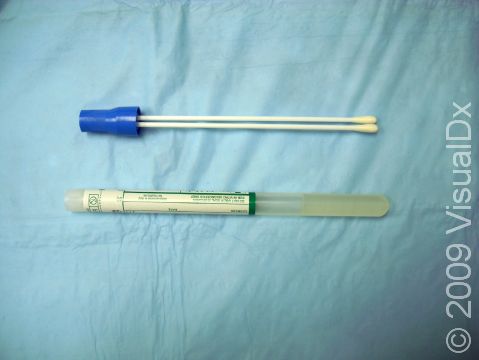Culture, Microbiological
Microbiological culture, also known as microbial culture, is a routine procedure that involves collecting tissue or fluid from the skin, nails, or mucous membranes (eg, inside the mouth). Microbial cultures are used to help determine whether a person has a yeast or fungal infection, such as tinea (eg, athlete’s foot, ringworm), a viral infection (eg, herpes simplex virus), or a bacterial infection caused by Streptococcus (strep) or Staphylococcus (staph), for example.
Microbial culture results not only confirm the presence or absence of an infection but also typically the organism causing the infection.
What to Expect During Your Visit
In the case of a suspected yeast or fungal infection of the skin, the medical professional will do a potassium hydroxide preparation test (KOH prep) by gently scraping cells from the affected skin or nails, often with a scalpel or edge of a glass slide, or collecting pus, onto a microscope slide. The medical professional then covers the collected cells with a KOH solution, heats the slide for a short time, and then examines the slide under a microscope to look for signs of fungus. A sample of scales or pus may also be sent to the laboratory for microscopy and fungal culture to determine the exact organism that is present.
In the case of a suspected bacterial or viral infection, the medical professional will gently rub a sterile cotton swab along the top of the site of suspected infection. If there is a lesion such as an abscess, the medical professional may carefully open the lesion so pus inside may be swabbed and tested.
These procedures are all either painless or minimally painful.
It usually takes days to get the culture results, and results will help the medical professional determine the proper treatment for the condition.
Depending on the likelihood of infection, your medical professional may prescribe topical or oral antibiotics or antivirals, even before the culture results are available.
What to Expect After Your Visit
Following the microbial culture, your medical professional should contact you if any follow-up care is needed.
Follow-Up Care
Your medical professional will determine if treatment should be started right away or if you need to return for treatment. If you are prescribed antibiotics or antivirals, take them exactly as directed.
Risks and Potential Side Effects
There are minimal risks associated with microbial culture.
When to Seek Medical Care
Contact your medical professional if you have bleeding at the culture site that does not stop or if there is new or worsening infection in the area (eg, pain, spreading redness, or fever).
References
Brigl M, J. McAdam A. Laboratory diagnosis of infectious diseases. In: Loscalzo J, Fauci AS, Kasper DL, Hauser SL, Longo DL, Jameson JL, eds. Harrison’s Principles of Internal Medicine. 21st ed. McGraw Hill; 2022.
Last modified on May 22nd, 2024 at 6:26 pm

Not sure what to look for?
Try our new Rash and Skin Condition Finder
